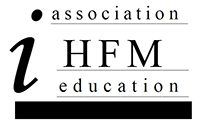Type of Submission
Industry Insights
Abstract
In today’s volatile markets, with consumer buying behavior evolving rapidly, rudimentary revenue management practices are no longer sufficient. Given the complexity of demand patterns in today’s markets, optimal demand management is achieved only with a totally holistic approach. This means that revenue management must be treated as a highly structured, multi-disciplinary business process, including a fully synergistic approach to the relationship between marketing, sales and operations. Key components of a comprehensive revenue management program include: 1) aligning product to customer demand, 2) taking a structured approach to competitive benchmarking, 3) creating a strategic pricing framework, 4) forecasting unconstrained demand, 5) using business mix as a primary strategy, and 6) managing distribution effectively and efficiently. In all of these areas existing best practices enable hotels to optimize demand and to approach markets in a balanced manner, securing higher room rates when possible and higher volume when needed. Part 1 of this series on revenue management addressed the elements of product alignment, competitive benchmarking and strategic pricing. This article explores the last three key revenue management components: Demand Forecasting, Business Mix Manipulation and Distribution Management.
Recommended Citation
Buckhiester, Bonnie
(2011)
"Revenue Management as a Multi-Disciplinary Business Process - Part Two,"
Journal of Hospitality Financial Management: Vol. 19:
Iss.
2, Article 6.
Available at:
https://scholarworks.umass.edu/jhfm/vol19/iss2/6
